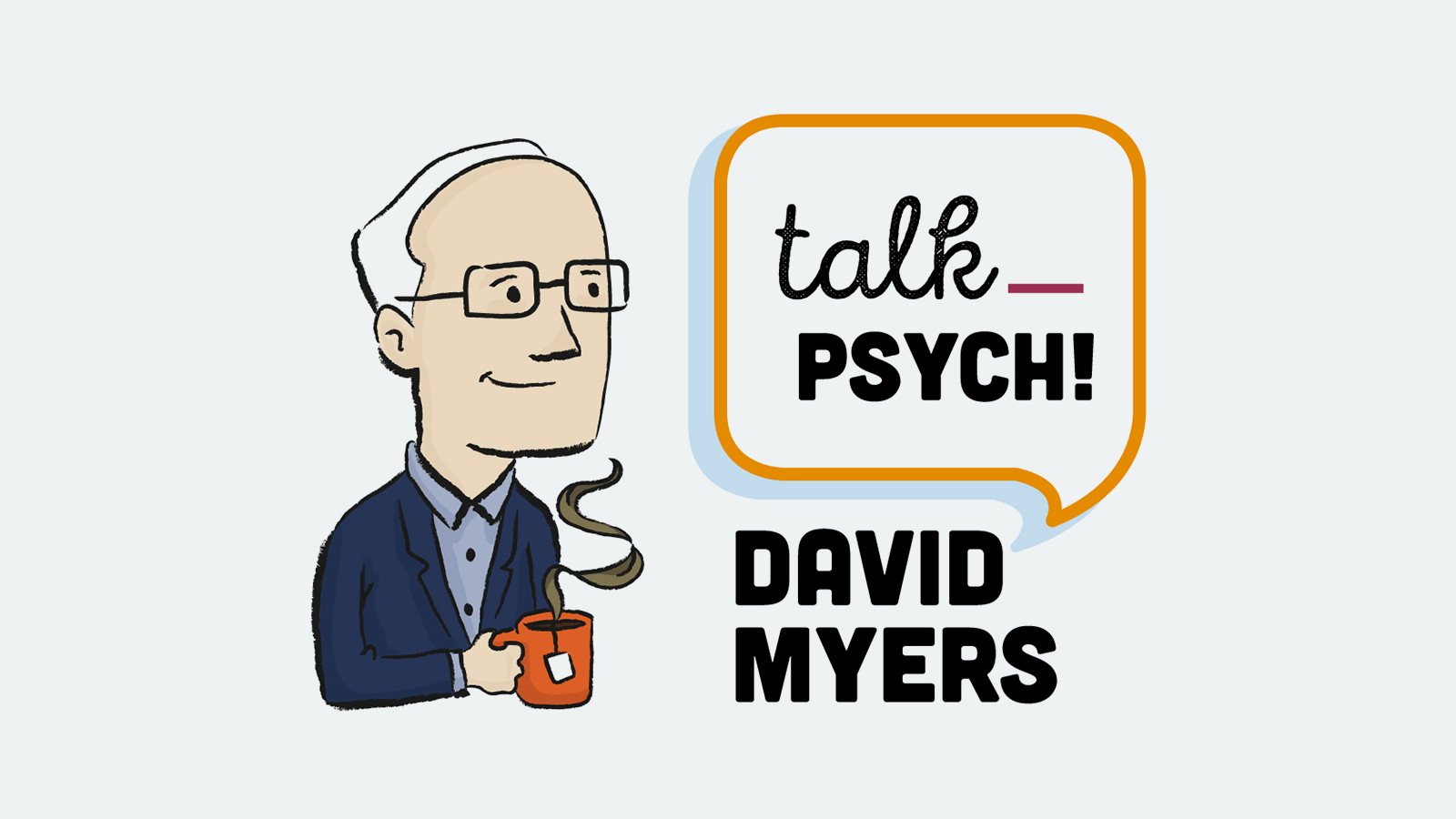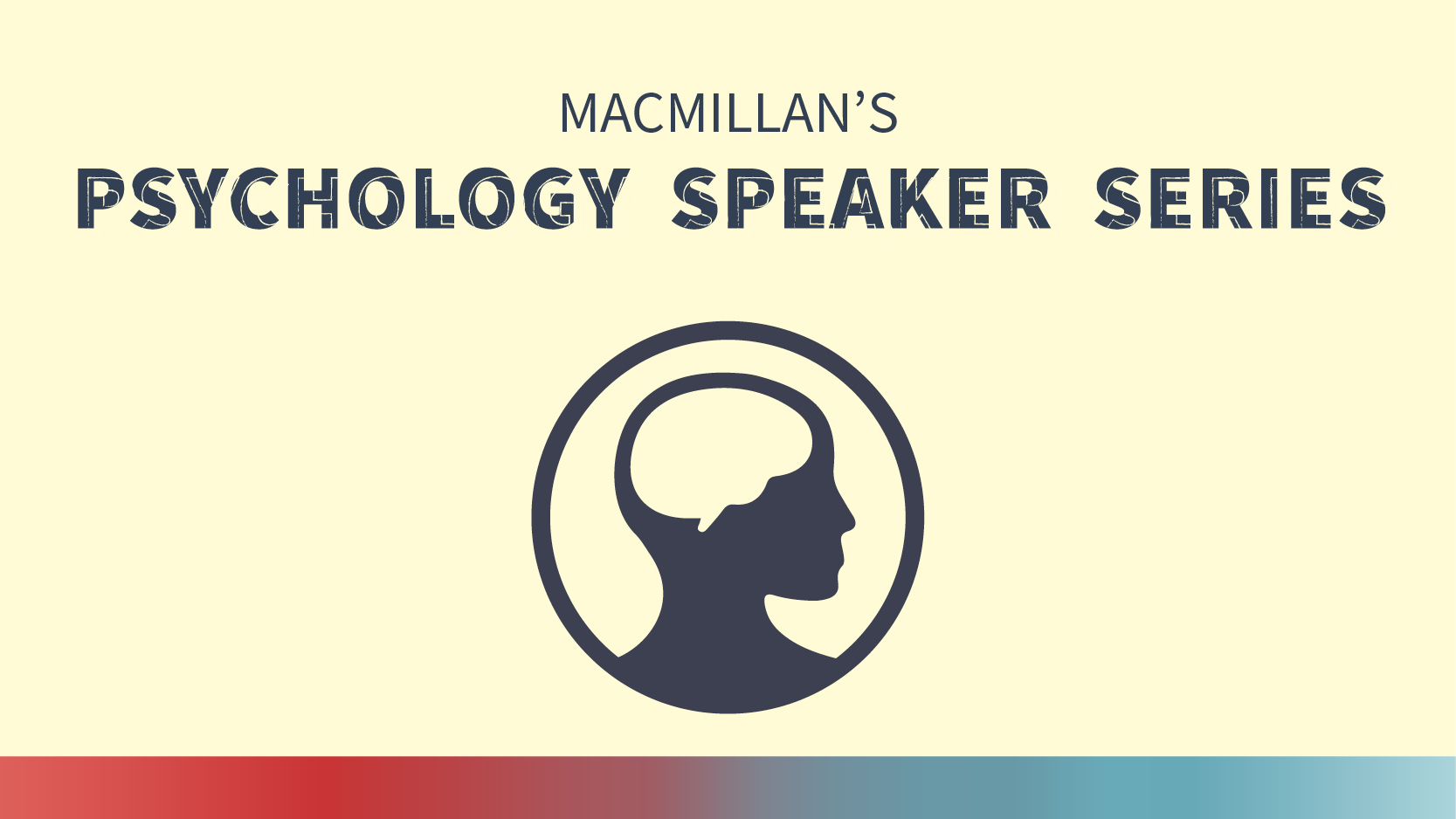-
About
Our Story
back- Our Mission
- Our Leadershio
- Accessibility
- Careers
- Diversity, Equity, Inclusion
- Learning Science
- Sustainability
Our Solutions
back
-
Community
Community
back- Newsroom
- Discussions
- Webinars on Demand
- Digital Community
- The Institute at Macmillan Learning
- English Community
- Psychology Community
- History Community
- Communication Community
- College Success Community
- Economics Community
- Institutional Solutions Community
- Nutrition Community
- Lab Solutions Community
- STEM Community
- Newsroom
- Macmillan Community
- :
- Psychology Community
- :
- Psychology Blog
- :
- Psychology Blog - Page 7
Psychology Blog - Page 7
Options
- Mark all as New
- Mark all as Read
- Float this item to the top
- Subscribe
- Bookmark
- Subscribe to RSS Feed
Psychology Blog - Page 7
Showing articles with label Research Methods and Statistics.
Show all articles
Author
07-18-2016
02:09 PM
Originally posted on February 5, 2015. “The worst call in Super Bowl history,” read a headline in my hometown Seattle Times after Seahawks' head coach Pete Carroll seemingly threw the game away with his ill-fated decision to pass – rather than run – as the game clock expired. Actually, Carroll made two end-of-half decisions in Sunday’s Super Bowl, both questioned by the NBC announcers. The differing outcomes of the decisions – and the resulting reactions by pundits and fans – offer potent examples of a mental pitfall that has been the subject of roughly 800 psychological science publications. “Hindsight bias,” also known as the “I knew it all along phenomenon,” is the almost irresistible tendency to believe – after an experiment, a war, an election, or an investment – that the outcome was foreseeable. After the stock market drops (it “was due for a correction”) or an election is lost (by a “terrible candidate”), the outcome seems obvious – and thus blameworthy. But, as research shows, we often do not expect something to happen until it does. Only then do we clearly see the forces that triggered the event, and feel unsurprised. Because outcomes seem as if they should have been foreseeable, we are more likely to blame decision makers for what are, in retrospect, “obvious” bad choices, rather than praise them for good ones (which also seem “obvious”). As the 19th century philosopher Søren Kierkegaard said, “Life is lived forwards, but understood backwards.” With six seconds remaining in the first half, Carroll decided to throw for a touchdown – a risk that could have resulted in the clock expiring. Better to kick a safe field goal, argued the NBC announcers. But the gamble worked, and Carroll was acknowledged to have made a “gutsy” call. Then, at the game’s end, with 26 seconds left – and victory less than a yard away – Carroll and his offensive coordinator ventured a fateful, intercepted pass. Fans exploded on social media. A (less-explicit) version of most reactions: “With three downs and one timeout to go, and the league’s best powerful runner at the ready, what was he thinking?” “The stupidest coaching decision I can recall,” I vented to my wife afterwards, aided by 20/20 hindsight. But like all the football fans who made Coach Carroll an object of national ridicule, I was judging the call after knowing the outcome. The next morning I reassessed the situation. With one timeout, I now realized, Seattle could venture, at most, two running plays. The attempted pass was a free third play – which, if incomplete, would still leave them with the same two possible running plays. Moreover, the odds of an interception at the one-yard line are, I later learned, even less than the odds of a fumble. And had a touchdown pass arrived in the receiver’s hands a half-second sooner, we could use game theory to explain how the wily Seahawks won by doing what their opponent least expected. Responding to those who claimed he made “the worst call ever,” Carroll later explained to Today Show host Matt Lauer, “It was the worst result of a call ever. The call would have been a great one if we caught it. It would have been just fine and no one would have thought twice about it.” Bringing statistical analysis to the decision, FiveThirtyEight.com impeccably calculated that Carroll had indeed made a smart one – that he had slightly increased his team’s chance of a win. What’s more, the evidence-based bad coaching decision was made by New England coach Bill Belichick, who, instead of calling a timeout, opted to let the clock run down (which would have deprived quarterback Tom Brady of another scoring opportunity in the likely event of a Seattle touchdown). But probabilities are not certainties. In sports, as in life, good decisions can yield bad outcomes. Bad decisions can have lucky outcomes. And once outcomes are known we immediately retrofit our thinking. Thanks to hindsight bias, “winning erases all sins.” And losing makes a good coaching call look not gutsy but just plain stupid – even to a psychologist-fan who temporarily forgot what he teaches. (Note: This essay was simultaneously co-published by www.TheConversation.com)
... View more
Labels
-
Research Methods and Statistics
0
0
1,919
Author
07-18-2016
12:56 PM
Originally posted on June 4, 2015. One curiosity of recent psychological science is what I’ve called the “religious engagement paradox”: The association between religious engagement and human flourishing is negative across places and positive across individuals. For example, in the most religious U.S. states people die sooner, commit more crime, divorce more, smoke more, and report lower emotional well-being than in the least religious states. Yet more religiously engaged individuals live longer, commit less crime, divorce less, smoke less, and are happier. (Don’t believe it? See here.) Princeton economist Angus Deaton and psychologist Arthur Stone (2013) share my puzzlement (here😞 “Why might there be this sharp contradiction between religious people being happy and healthy, and religious places being anything but?” (One possible answer, as Ed Diener, Louis Tay, and I suggested, lies in the more impoverished life circumstances of people in highly religious countries and states.) As I noted earlier, there also is a parallel “wealth and politics paradox”: In the U.S., low income states and high income individuals more often vote Republican: Now we have a report of yet another paradox: In Europe, “More liberal countries and more conservative individuals have higher levels of SWB [subjective well-being].” And another: People in highly religious states do more Google searches for sexually explicit content such as “gay sex,” as I was able to replicate using Google archives. So I couldn’t resist asking the lead researcher, Cara MacInnis at the University of Toronto, if it might nevertheless also be true that more religious individuals do less online searching for sexual content. Stay tuned, but MacInnis tells me that her latest data (paper forthcoming) do, indeed, seem to fit the religious engagement paradox pattern. The repeated lesson: how we ask the question (comparing aggregate or individual data) can sharply change the answer. So beware: partisans on both sides can pick their data to make their point.
... View more
Labels
-
Research Methods and Statistics
0
0
1,187
Author
07-18-2016
11:23 AM
Originally posted on October 20, 2015. In response to the big “Reproducibility Project” news that only 36 percent of a sample of 100 psychological science studies were successfully replicated, psychologists have reassured themselves that other fields, including medicine, also have issues with reproducibility. Moreover, differing results sometimes illuminate differing circumstances that produce an effect. Others have agreed on a lesson for textbook authors. “A finding is not worth touting or inserting in the textbooks until a well-powered, pre-registered, direct replication is published,” argues Brent Roberts. “The conclusions of textbooks should be based not on single studies but on multiple replications and large-scale meta-analyses,” advise Wolfgang Stroebe and Miles Hewstone. Those are high standards that would preclude textbook authors reporting on first-time discoveries, some of which are based on big data. Ironically, it would even preclude reporting on the one-time Reproducibility Project finding (can it be replicated?). Even so, my introductory psychology co-author, Nathan DeWall, and I are cautious about reporting single-shot findings. Some intriguing new studies end up not in our texts but in our next-edition resource files, marked “needs a replication.” And we love meta-analyses, which give us the bigger picture, digested from multiple studies. So, I wondered: How did we do? How many of the nonreproducible studies ended up in Psychology, 11th Edition? Checking the list, my projects manager, Kathryn Brownson, found three of the 100 studies in our bibliography—one of which successfully replicated, one of which produced insufficient data for a replication, and one of which failed to replicate. Thus, from page 504: In several studies, giving sugar (in a naturally rather than an artificially sweetened lemonade) had a sweet effect: It strengthened people’s effortful thinking and reduced their financial impulsiveness (Masicampo & Baumeister, 2008; Wang & Dvorak, 2010). will likely become: In one study, giving sugar (in a naturally rather than an artificially sweetened lemonade) had a sweet effect: It reduced people’s financial impulsiveness (Wang & Dvorak, 2010). Ergo, out of 5174 bibliographic citations, one citation—and its five associated text words—will end up on the cutting room floor.
... View more
Labels
-
Research Methods and Statistics
0
0
1,213
gary_lewandowsk
Migrated Account
04-29-2016
06:55 AM
The Discovering the Scientist Within: Research Methods in Psychology author team—Gary Lewandowski, Natalie Ciarocco, and David Strohmetz—would like to share our sincere thanks for your overwhelming interest in our recently published first edition. Since publication in December, we've been so delighted to see that our vision to create a text with a student-centric "learning by doing" approach has resonated with so many our of colleagues throughout North America. Thank you for your reviews, comments, support, and excitement. We hope that you will contact us with any questions! Best wishes in your courses in the upcoming year. Sincerely, Gary, Natalie and Dave What's so different about Discovering the Scientist Within? Each design chapter focuses on a single research question, which provides a strong foundation for students’ understanding of the actual design and the entire research process. Each design chapter repeats all steps of the research process, which puts into classroom practice the authors’ own experience-based conclusion that repetition is the key to solidifying research skills—skills that lead to success in the laboratory, in the workplace, and beyond. Book-specific Research in Action activities in LaunchPad Solo put students in the role of the researcher and ask them to make decisions in planning and executing a study from idea to results. The authors have provided the most comprehensive Instructor’s Resource Manual for the research methods course, containing nearly 300 sources to make teaching methods easier and more relatable to students.
... View more
Labels
-
Industrial and Organizational Psychology
-
Research Methods and Statistics
1
0
2,011
Expert
04-16-2016
12:06 PM
After introducing students to the concept of correlations, it may help students to see a scatterplot to understand what the correlation coefficient means. Give students an example of correlation. For example, Cornell, et.al. (2013) found a correlation of .32 between the number of dropouts from 289 Virginia high schools and student perceptions of teasing and bullying. At this website, enter .32 in the “r” box and enter 200 in the “n” box (289 of course would be better, but the site limits the number of data points to 200. Press enter. In pairs or small groups, ask students to describe the graph, and then ask a volunteer to share their description. (Students may explain that the number of dropouts is plotted along the x axis and the student perceptions of teasing and bullying are plotted along the y axis. As perceptions increase, so do number of dropouts.) Explain that Cornell, et.al. (2013) also found a correlation of .46 between the percent of students who qualify for free and reduced price meals and academic failure rate. Ask students to predict what will happen to the points on the scatterplot when you enter .46 into the “r” box. Again, ask students to explain what the scatterplot means to a partner, and then ask for a volunteer to share their description. Give one last example from Cornell, et.al. (2013). They found a correlation of -.42 between the percent of students who qualify for free and reduced price meals and the size of the high school. Ask students to predict what will happen to the points on the scatterplot when you enter -.42 into the “r” box. Again, ask students to explain what the scatterplot means to a partner, and then ask for a volunteer to share their description. Finally, ask students to predict what will happen to the data points when you enter 1 in the “r” box. Now that students have a handle on what is happening in scatterplots, invite students (perhaps as an assignment), to visit http://guessthecorrelation.com. Here, players try to guess the correlation based on the scatterplot. You get three lives. If your guess is off by more than .1, you lose a life. If your guesses are good, you earn lives and coins. The data collected are used for research; you can read about that on the “About” page. Unfortunately, the site only gives scatterplots for positive correlations. Cornell, D., Gregory, A., Huang, F., & Fan, X. (2013). Perceived prevalence of teasing and bullying predicts high school dropout rates. Journal of Educational Psychology, 105(1), 138-149. doi:10.1037/a0030416
... View more
Labels
-
Industrial and Organizational Psychology
-
Research Methods and Statistics
0
0
2,242
Expert
01-27-2016
04:03 AM
Last week I wrote about how it is I came to wear psychology-related t-shirts to my Intro Psych classes. That post included nine t-shirts. [Read that post.] This week I have ten to share. Vision – Childish Side of the Moon This is a pretty straight-forward illustration of how white is the presence of all wavelengths of light. And the Pink Floyd fans in your class will enjoy the reference. Sleep – Big Fan I hammer pretty hard the importance of sleep. Too many students think that staying up all night studying is a good idea, and I present the landslide of evidence that says it’s not. In case they miss my message, perhaps due to sleep deprivation, this t-shirt drives home the point. Sleep – Counting Sheep If I’m feeling more whimsical, I will go with this shirt depicting counting sheep – on a calculator, on “fingers,” on an abacus. Psychoanalysis – Devil and angel bunnies If you talk about the id, ego, and superego, this shirt is a must. Wear a shirt over top, like a denim shirt or a light fleece. As you describe the conflict between the id and the superego, if you’re lucky, a student will say something like, “Oh! Like the devil and angel on your shoulders!” That’s your cue to remove your outer layer, revealing the devil and angel bunnies on your shoulders. Research methods – Science of the Lambs When introducing research methods in Intro, I sometimes talk about how people think that what determines what is a science and what is not are the apparatuses that are used. “If there are flasks and Bunsen burners, then it is science.” If class time allows, I ask students to consider that question: What makes a science a science? This makes for a nice think (on your own for a minute or two), pair (talk with the person next to you for a minute or two), share (ask for volunteers to share their responses) activity. Personality – Introverting When covering the Big Five personality traits, I use this shirt to come out as an introvert. The best metaphor I have heard for introversion and extraversion says that which way you lean is determined by what recharges your batteries most of the time. If your batteries recharge when you are with people, you are more extraverted. If your batteries recharge when you are alone, you are more introverted (see this blog post for example). The message in this shirt is “back off; I’m recharging.” Sensation — Hello? Can anybody hear me? I use this shirt to introduce the idea that sound and color only exist in our brains. Sound waves and light waves exist outside of us, but what we describe as sound and what we describe as color don’t. They are sensations created by our brains, a conversion of those waves into something we can experience. Development – Donkey Kong and Mario This shirt’s a nod to the gamers in your class. If you’d like to use this shirt for discussion, ask students questions like: Given that Mario is walking, how old would you guess he is? [2-ish] What reflex is Donkey Kong exhibiting with the baby bottle? [grasping] Years later, do you expect them to remember this event? Why? [nope, infantile amnesia] You can also reprise this shirt for the social psych chapter. What are some ways in which Donkey Kong and Mario could work to resolve their conflict? [e.g., superordinate goals]. Optimism/pessimism – Which glass are you? When covering optimists and pessimists, this shirt provides an opportunity to introduce students to some other -ists, such as utopists and surrealists. Be prepared to explain some of these; students will ask. Final exam day – Pencils Since students are required to bring a Number 2 pencil to take the final exam, this handy shirt depicts pencil numbers 1 through 12.
... View more
Labels
-
Consciousness
-
Developmental Psychology
-
Industrial and Organizational Psychology
-
Personality
-
Research Methods and Statistics
-
Sensation and Perception
-
Stress and Health
1
0
2,202
Expert
01-13-2016
04:00 AM
As a psychology instructor it is clear to you the myriad ways in which psychology can be used to both understand social issues and speak to solutions. In fact, the APA Guidelines for the Major (2013; see below) encourages us to help our students see the same. Debra Mashek (2016) suggests a few assignments that provide our students opportunities to connect psychology with today’s social issues. Integrative essay The instructor chooses three articles (interesting, nifty methodology, and not too difficult for students to understand – but on the surface may not have anything obviously to do with each other), and assigns one of those articles to each student, i.e. 1/3 of the class gets article A, 1/3 gets article B, and 1/3 gets article C. Each student writes a one-page summary of their assigned article and brings that with them to class. The class breaks up into groups of three, where the groups are composed of students who have all read different articles. In a jigsaw classroom format, the students tell the others in their three-person group about their article. Students then “articulate an applied question that invites application of ideas from all the articles.” Each 3-person group then co-authors a short paper (two to three pages) that identifies their applied question and how each of the three articles speak to that question. Persuasion research activity Right after Hurricane Katrina, Mashek decided she wanted her Intro Psych students to experience psychological research firsthand while also contributing to the relief effort. Mashek gave a brief lecture on foot-in-the-door, door-in-the-face, and reciprocity. She randomly assigned ¼ of students to foot-in-the-door, ¼ to door-in-the-face, ¼ reciprocity (she gave these students lollipops to hand to people before asking for a donation), and ¼ to a command condition (“give money”). During that same class period students were sent out in pairs to different areas of campus to return an hour later. Thirty-five students collected $600. Students reported a greater connection to the victims of Katrina after they returned than they reported before they left. Mashek used this experience as a leaping off point for discussing research methodology in the next class session. Current headline classroom discussion Pick a current headline. Break students into small groups, perhaps as an end of class activity, and give them one or two discussion questions based on the current chapter you are covering that are relevant to the headline. For example, if you are covering the social psychology chapter in Intro Psych, give students this headline from the January 9, 2016 New York Times: “Gov. Paul LePage of Maine Says Racial Comment Was a ‘Slip-Up’.” This is a short article, so you could ask students to read the article itself. Sample discussion questions: (1) What evidence is there of ingroup bias? (2) Do Gov. LePage’s comments illustrate stereotyping, prejudice, and/or discrimination? Explain. If time allows, student groups can report out in class. Alternatively, this could be a group writing assignment or a scribe for the group could post a summary of the group’s responses to a class discussion board. Students will gain an appreciation of the scope of psychology and how it is relevant to today’s social issues. This activity throughout the course should help students, after the course, to continue to see psychology at play. The APA Guidelines for the Major (2013) include these indicators related to social issues: 1.3A Articulate how psychological principles can be used to explain social issues, address pressing societal needs, and inform public policy 3.3c Explain how psychology can promote civic, social, and global outcomes that benefit others 3.3C Pursue personal opportunities to promote civic, social, and global outcomes that benefit the community. 3.3d Describe psychology-related issues of global concern (e.g., poverty, health, migration, human rights, rights of children, international conflict, sustainability) 3.3D Consider the potential effects of psychology-based interventions on issues of global concern American Psychological Association. (2013). APA guidelines for the undergraduate psychology major: Version 2.0. Retrieved from http://www.apa.org/ed/precollege/undergrad/index.aspx Mashek, D. (2016, January 4). Bringing the psychology of social issues to life. Lecture presented at National Institute on the Teaching of Psychology in Tradewinds Island Grand Resort, St. Petersburg Beach. Seelye, K. Q. (2016, January 9). Gov. Paul LePage of Maine Says Racial Comment Was a 'Slip-up'. The New York Times. Retrieved January 9, 2016, from http://www.nytimes.com/politics/first-draft/2016/01/08/gov-paul-lepage-of-maine-denies-making-racist-remarks
... View more
Labels
-
Abnormal Psychology
-
Cognition
-
Consciousness
-
Developmental Psychology
-
Emotion
-
Evolution
-
Gender
-
Genetics
-
History and Systems of Psychology
-
Industrial and Organizational Psychology
-
Intelligence
-
Learning
-
Memory
-
Motivation
-
Nature-Nurture
-
Neuroscience
-
Personality
-
Research Methods and Statistics
-
Sensation and Perception
-
Social Psychology
-
Stress and Health
0
0
8,370
Expert
01-09-2016
11:26 AM
More than one Intro Psych textbook opens with this warning to students: Beware the hindsight bias! And students should beware, of course. Once the findings of a research study are revealed, it is hard for students to turn back the clock to the time when they did not know the results. With the results known, they are likely to label them as obvious; they knew them all along. Steven Pinker (2016) urges us, as instructors, to remember that we, too, fall victim to hindsight bias, the curse of knowledge. We have spent years talking about these Intro Psych concepts. Because we have a difficult time imagining what it was like to not know these concepts, we may rush through our lectures, thinking our students either already know the concepts or can grasp them with quick, concise explanations. How can we, as instructors, keep hindsight bias at bay in the classroom? Pinker says “[t]he best antidote is feedback: Asking students questions; monitoring their reactions, soliciting commentary; querying knowledge through regular assessments.” On the first day of class, as I am explaining the structure of the course, I will explain to my students what the hindsight bias is, how I can’t remember what it was like to not know the content of this course, and how I have built a course designed to keep me informed of what they, the students, are understanding and what they are not as we go, before we get to the high stakes exams. And that I am going to trust them to tell me when they are not following what I am saying. What better way to help students understand a concept like hindsight bias than to immediately use it to explain a common instructor behavior? With the added bonus of showing students how psychology can be used to teach psychology! Pinker, S. (2016, January 3). The sense of style: Writing and teaching in the 21st century. Address presented at National Institute on the Teaching of Psychology in Tradewinds Island Grand Resort, St. Petersburg Beach. [Pinker’s book by the same title has an entire chapter devoted just to hindsight bias if you would like to read more.]
... View more
Labels
-
Cognition
-
Industrial and Organizational Psychology
-
Research Methods and Statistics
1
0
1,814
Topics
-
Abnormal Psychology
16 -
Achievement
3 -
Affiliation
2 -
Behavior Genetics
2 -
Cognition
33 -
Consciousness
32 -
Current Events
26 -
Development Psychology
18 -
Developmental Psychology
30 -
Drugs
5 -
Emotion
55 -
Evolution
3 -
Evolutionary Psychology
4 -
Gender
17 -
Gender and Sexuality
7 -
Genetics
10 -
History and System of Psychology
6 -
History and Systems of Psychology
5 -
Industrial and Organizational Psychology
47 -
Intelligence
6 -
Learning
63 -
Memory
37 -
Motivation
13 -
Motivation: Hunger
2 -
Nature-Nurture
5 -
Neuroscience
45 -
Personality
29 -
Psychological Disorders and Their Treatment
21 -
Research Methods and Statistics
98 -
Sensation and Perception
43 -
Social Psychology
121 -
Stress and Health
51 -
Teaching and Learning Best Practices
54 -
Thinking and Language
18 -
Virtual Learning
25
- « Previous
- Next »
Popular Posts








